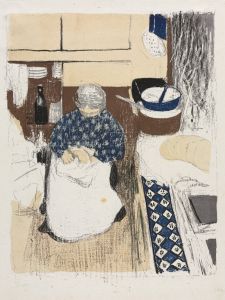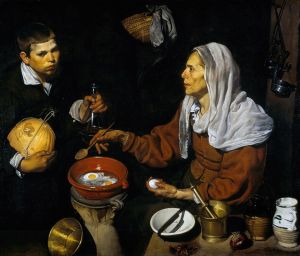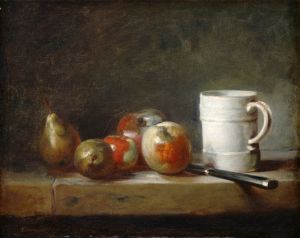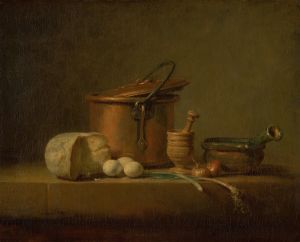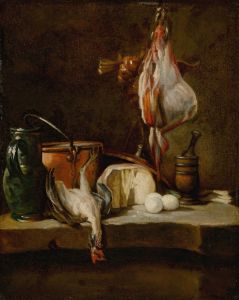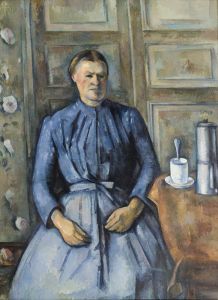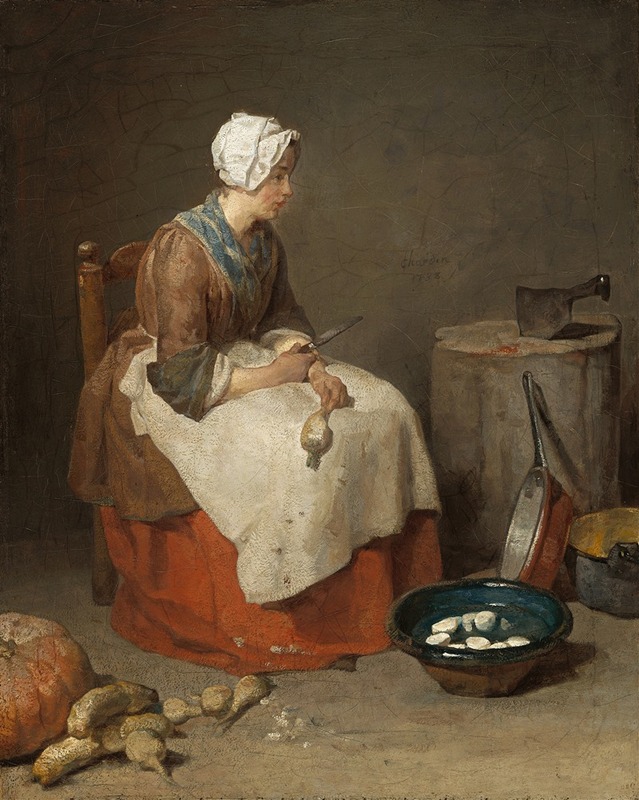
The Kitchen Maid
A hand-painted replica of Jean Siméon Chardin’s masterpiece The Kitchen Maid, meticulously crafted by professional artists to capture the true essence of the original. Each piece is created with museum-quality canvas and rare mineral pigments, carefully painted by experienced artists with delicate brushstrokes and rich, layered colors to perfectly recreate the texture of the original artwork. Unlike machine-printed reproductions, this hand-painted version brings the painting to life, infused with the artist’s emotions and skill in every stroke. Whether for personal collection or home decoration, it instantly elevates the artistic atmosphere of any space.
Jean Siméon Chardin, a prominent 18th-century French painter, is renowned for his exquisite still lifes and genre paintings that capture the quiet, everyday moments of domestic life. One of his notable works, "The Kitchen Maid," exemplifies his mastery in depicting the simplicity and beauty of ordinary scenes.
"The Kitchen Maid," painted around 1738, is a genre painting that portrays a young maid engaged in her daily chores. Chardin's focus on the mundane activities of life reflects the influence of the Dutch Golden Age painters, who similarly celebrated the beauty in everyday tasks. In this painting, Chardin captures the essence of the Enlightenment era's interest in the dignity of labor and the virtue of simplicity.
The composition of "The Kitchen Maid" is both intimate and realistic. The maid is depicted in a modest kitchen setting, surrounded by various kitchen implements and ingredients. Chardin's attention to detail is evident in the textures of the objects, from the gleam of the copper pots to the roughness of the wooden table. The maid herself is portrayed with a sense of quiet concentration, absorbed in her work, which adds a layer of narrative to the scene.
Chardin's use of color and light in "The Kitchen Maid" is particularly noteworthy. He employs a muted palette, dominated by earthy tones, which enhances the painting's serene and contemplative mood. The subtle play of light and shadow adds depth to the scene, highlighting the maid's figure and the objects around her. This careful modulation of light not only creates a sense of realism but also imbues the painting with a gentle, almost poetic quality.
The painting reflects Chardin's ability to elevate the ordinary to the extraordinary, a hallmark of his artistic style. Unlike many of his contemporaries who focused on grand historical or mythological themes, Chardin found inspiration in the simple, everyday moments of life. His work is characterized by a sense of humility and sincerity, qualities that have endeared him to generations of art lovers.
"The Kitchen Maid" is housed in the Louvre Museum in Paris, where it continues to be admired for its technical excellence and emotional depth. Chardin's ability to convey the quiet dignity of domestic life has earned him a lasting place in the history of art. His paintings, including "The Kitchen Maid," offer a window into the lives of ordinary people in 18th-century France, capturing the timeless beauty of the everyday.
In summary, "The Kitchen Maid" by Jean Siméon Chardin is a masterful depiction of a simple domestic scene, rendered with exquisite attention to detail and a profound appreciation for the beauty of ordinary life. Through his use of color, light, and composition, Chardin transforms a mundane moment into a work of art that resonates with viewers across the centuries.





